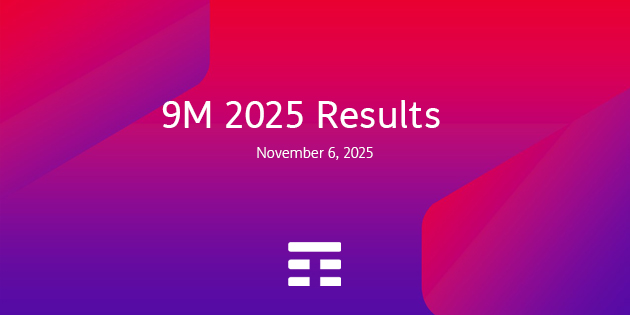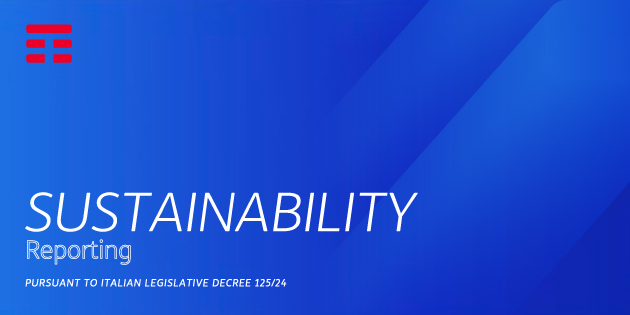TIM’S BOARD OF DIRECTORS APPROVED THE 2018-2020 DIGITIM STRATEGIC PLAN, AIMED AT:
►CREATING BEST IN CLASS CUSTOMER ENGAGEMENT THROUGH A DIGITAL AND AGILE CUSTOMER JOURNEY REDESIGN
►SUPPORTING LEADERSHIP POSITIONING BY SUSTAINING PREMIUM CUSTOMER BASE AND CAPTURING NEW GROWTH OPPORTUNITIES IN AND OUTSIDE THE CORE BUSINESS
►ACCELERATING CASH FLOW GENERATION TO STRENGTHEN CAPITAL STRUCTURE AND INCREASE SHAREHOLDER RETURN
►IMPLEMENTING A NEW AGILE ORGANIZATION AND PERFORMANCE-BASED AND DATA DRIVEN CULTURE
ALL TIM BUSINESS UNITS WILL PLAY A MAJOR ROLE IN SUPPORTING 2018-2020 MAIN GOALS:
CONSUMER: INCREASED CONVERGENCE AND DEMAND FOR CONTENT WILL GROW FIXED UBB CLIENTS FROM 1.8 MLN TO > 5 MLN; LTE PENETRATION WILL RISE FROM 76% TO > 95%; TRIPLE TIMVISION CUSTOMERS AND DOUBLE FIXED/MOBILE CONVERGENT BASE
BUSINESS: ICT AND CLOUD BUSINESS WILL INCREASE BY 50%, REACHING 25% OF BUSINESS SEGMENT TOTAL REVENUE BY 2020, WHILE ITS FIBER CUSTOMER BASE WILL TRIPLE TO MORE THAN 1 MILLION
WHOLESALE WILL RETURN TO GROWTH, WHILE UBB LINES WITH OTHER OPERATORS WILL GROW FROM ABOUT 1 MILLION TO ABOUT 3 MILLION
TIM BRASIL WILL STRONGLY EXPAND ITS MOBILE POST-PAID CUSTOMERS FROM 30% TO ABOUT 50% OF THE BASE, WHILE INCREASING ITS RESIDENTIAL BROADBAND CUSTOMERS BY 4 TIMES AND GROWING ITS SMALL MEDIUM BUSINESS REVENUES BY 20%
INWIT WILL STRENGTHEN ITS LEADERSHIP WITH MORE CUSTOMERS, NEW TOWERS AND NEXT GENERATION (5G) INFRASTRUCTURE
ENHANCE CUSTOMER EXPERIENCE THROUGH DIGITALISATION WILL PLAY A CENTRAL ROLE, AIMS TO:
- STRENGTHEN #1 POSITION IN NETWORK QUALITY
- IMPROVE CUSTOMER SATISFACTION INDEX LEADERSHIP
- SHORTEN ORDER-TO-DELIVERY TIME
- INCREASE CUSTOMER CARE TRHOUGH DIGITAL AND AI INTERFACE
- ACCELERATE SALES VIA DIGITAL CHANNELS
***
►DIGITALISATION INCREASES OPEX EFFICIENCY OPPORTUNITY: ADDRESSABLE DOMESTIC BASE STEPS UP TO AROUND 80% OF TOTAL OPERATING EXPENSES
►9 BILLION EURO 3-YR CUMULATIVE CAPEX IN DOMESTIC PLUS ABOUT 12 BILLION REAIS IN BRASIL, ALLOW FOR CONTINUED UBB EXPANSION AND FOR CAPEX/SALES RATIO IMPROVEMENT (<20% BY YE2019 FOR DOMESTIC, ~ 20% BY 2020 FOR BRASIL)
►NEW LEAN ORGANIZATION IMPLEMENTED AT GROUP AND DOMESTIC LEVEL WITH AGILE AND PERFORMANCE-BASED CULTURE
►NEW EQUITY-BASED LTI FOR KEY MANAGEMENT, ALIGNED TO SHARE PERFORMANCE AND EFCF GENERATION, TO BE PRESENTED AT NEXT AGM
***
PLAN FINANCIAL TARGETS:
►STRONG GROWTH IN CONSOLIDATED EQUITY FREE CASH FLOW WITH AN EXPECTED CUMULATIVE TOTAL OF AROUND 4.5 BILLION EUROS OVER THE THREE-YEAR PERIOD
►MAJOR REDUCTION IN THE GROUP'S DEBT RATIO FOR 2018 CONFIRMED: NET DEBT/EBITDA AT APPROXIMATELY 2.7x AND CONTINUOUSLY DECREASING EACH YEAR IN 2019 AND 2020
►DOMESTIC SERVICE REVENUES EXPECTED TO REMAIN BROADLY STABLE OVER THE LIFE OF THE PLAN, WITH LOW SINGLE-DIGIT GROWTH IN EBITDA CAGR 2017-2020
►DOMESTIC FIXED UBB LINES (RETAIL AND WHOLESALE) EXPECTED TO GROW TO ABOUT 9 MILLION BY 2020
►GROWING SERVICE REVENUES AND MARGINS FOR TIM BRASIL AND INWIT
Milan, 6 March 2018
TIM’s Board of Directors approved the 2018 – 2020 Strategic Plan presented by CEO Amos Genish; the DigiTIM strategy marks a significant break with the past and, in a rapidly evolving industrial and social context, focuses on digital innovation as a key element for a leadership positioning in the Gigabit Society.
The Plan provides for the digitalisation of all processes to dramatically enhance the digital experience for best in class customer engagement and to create an effective digital journey. Customer experience will be improved by offering one single and intuitive interface which will allow for more customised, multi-channel interaction, thanks to a renewed IT architecture. A fully digital relationship model will be based on the use of Big Data and advanced analytics to sustain the customer base and capture new growth opportunities, contributing to the consolidation of TIM’s leadership in the Fixed and Mobile segments.
The objective over the Plan’s time span is to increase significantly digital engagement with customers, growing self-care App penetration to 85% and reducing human-operated interactions by 30%.
The customer offer, based on TIM’s network leadership (fibre, 4.5G and 5G early adoption in 2020), focuses on greater convergence.
This is a new path which, over the course of the Plan, aims to grow the fixed UBB customer base to over 5 million in the Consumer segment through additional video, music and gaming content, much of it exclusive. In Mobile, LTE penetration will rise from 76% to >95% over the course of the plan. TIM is also targeting a three-fold increase in the current number of TIMVISION customers (1.3 million on Fixed at the end of 2017) and a doubling of the Fixed/Mobile convergent customer base. These targets will leverage entertainment content made available by important partnership agreements with national and international players, as well as original productions and co-productions.
In the Business segment, the Group will evolve towards becoming a real ICT company by building a distinctive positioning in IT services to protect traditional revenues, focusing on Fixed/Mobile/IT convergence, UBB, and brand heritage. By 2020, ICT and Cloud revenues shall represent 25% of the total Business revenues, with the fibre customer base expected to triple.
The Wholesale business will return to growth and improve efficiency with new digital and automation tools. UBB lines with OLOs are expected to rise from about 1 million to about 3 million.
An important contribution to the Plan will be made also by the subsidiaries TIM Brasil, Inwit and Sparkle.
In Brazil, growth drivers are the migration to mobile post-paid, currently 17.8 million representing 30% of the customer base; the rapid development of fixed residential UBB which will reach 1 million fibre customers; and the further roll-out of 4G, to reach more than 4,000 cities by 2020 (96% of the entire urban population).
Inwit will strengthen its leadership by increasing its customer base, reaching a tenancy of 2,1x customer per site, and deploying next generation infrastructure such as new 5G-ready sites with fiber backhauling and thousands of small cells.
Sparkle will focus on data services, taking advantage of market growth trends by integrating its portfolio with Cloud-based, data centre, network security and disaster recovery solutions, while also consolidating its offer for voice and mobile services. It will also continue with the geographical increase of its infrastructure, extending its presence to 11 new countries over the course of the plan (+25 IP POP). 30% of Capex will be dedicated to expand infrastructure and virtualise and digitalise the network.
TIM has also entered strategic agreements with leading technological partners in the industry in order to speed up the spread of technologies like 5G, Internet of Things, Industry 4.0, cybersecurity, robotics and Artificial Intelligence. The development of these technologies will lead to a major transformation in all sectors and in people’s lives and will allow TIM to develop e-health and e-education services based on virtual reality, connected cars, smart cities and smart homes.
The DigiTIM strategy combines careful financial discipline based on cost control and optimisation of investments, to increase cash generation and create value. The use of data analytics will allow TIM to improve, on the one hand, investment efficiency by prioritising value-driven CAPEX and by leveraging the current UBB infrastructure; on the other one, to make efficiencies on OPEX, of which the addressable Domestic cost base will increase to around 80% of the total. Over the course of the Plan, fibre coverage will reach 80% of households and 100 cities with FTTH, with a cumulative programme of investments in Italy amounting to 9 billion euros, over 50% of which will be spent in network expansion and innovation. In Brazil CAPEX of about 12 billion reais over the plan will allow UBB expansion to continue. The CAPEX plans will see an improvement in the CAPEX/Sales ratio to < 20% by YE2019 in the Domestic business and to around 20% in Brazil by 2020.
The DigiTIM strategy will drive end-to-end transformation across all business units, both structurally and culturally. To support the transformation process, company organisation at TIM will be delayered and will move from a silo-based approach to an agile one based on flexibility and speed with a focus on results. The new equity-based LTI for key managers is based on share performance and Equity FCF generation, to guarantee a stronger management engagement.
In order to ensure the fulfilment of the Plan, the newly created Transformation Office will oversee the execution of the programme, which has more than 250 separate initiatives running across the company with clear responsibilities and accountability.
Note that this press release contains forward-looking statements about the Group’s intentions, beliefs and current expectations with regard to its financial results and other aspects of the Group's operations and strategies. Readers of this Press Release should not place undue reliance on such forward-looking statements, as final results may differ significantly from those contained in the above-mentioned forecasts owing to a number of factors, the majority of which are beyond the Group’s control.



